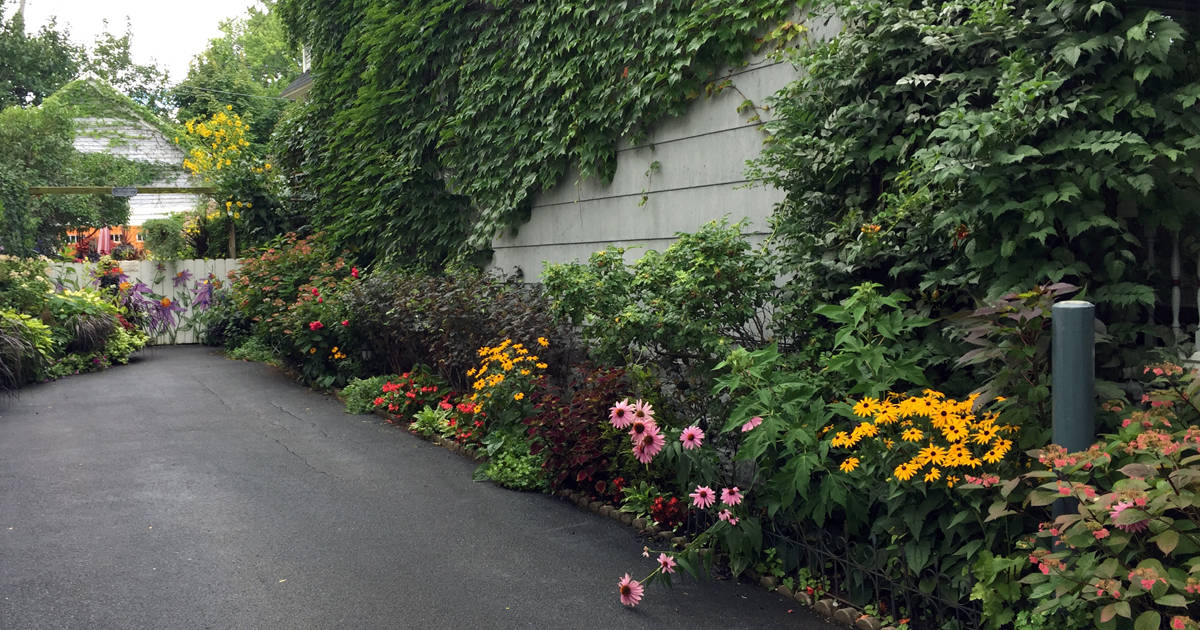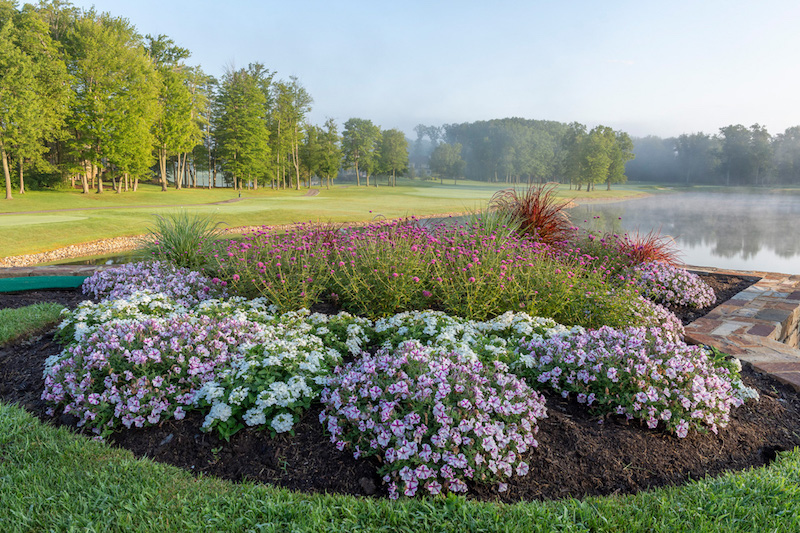The Best Strategy To Use For Hilton Head Landscapes
The Best Strategy To Use For Hilton Head Landscapes
Blog Article
Everything about Hilton Head Landscapes
Table of ContentsNot known Details About Hilton Head Landscapes Hilton Head Landscapes Can Be Fun For AnyoneA Biased View of Hilton Head LandscapesAll About Hilton Head LandscapesThe Of Hilton Head LandscapesThe Basic Principles Of Hilton Head Landscapes What Does Hilton Head Landscapes Do?An Unbiased View of Hilton Head Landscapes
Type compatibility is also a major element of unity in designone or two strikingly various forms benefit comparison and emphasis, but usually all various other kinds ought to have some resemblances for a linked appearance. Texture refers to exactly how coarse or fine the surface of the plant or hardscape material feels and/or looks.
Instances of plants with rugged appearance consist of philodendrons, agaves, bromeliads, hollies, hands, and hydrangeas. Qualities that develop great structure consist of tiny foliage; slim, strappy fallen leaves (grasses) or high, slim stems; small, thick twigs and small branches; long stems (creeping plants); and small, delicate blossoms.
The Best Guide To Hilton Head Landscapes
Many plants are average structure, in that they can not be described as having either rugged or fine texture. Medium-textured plants act as a background to web link and merge the rugged- and fine-textured plants.

To make a space feel smaller sized, position the rugged textures along the outer perimeter and the great textures closest to the customer. The detail of the crude appearance makes the plants show up closer and makes the space feel smaller. The regarded appearance of plants can likewise transform with the range from the plant.
The smart Trick of Hilton Head Landscapes That Nobody is Discussing
Vibrant shades enhance the contrast and make the texture appear coarser, while muted shades can squash structure. Hardscape with a crude texturesuch as really rough rocks and strong, huge timberstends to make all plant product show up much more moderate textured. Designers frequently develop a texture research study (Number 8) on paper to help decide the plan of plant materials.
Figure 8. Structure study. Color in plant material and hardscape adds passion and variety to the landscape. Shade is one of the most noticeable component in the landscape and is normally the emphasis of many homeowners; however, it is additionally one of the most short-term element, usually lasting just a few weeks a year for private plants.
3 Simple Techniques For Hilton Head Landscapes
A basic description of the shade wheel consists of the three key shades of red, blue, and yellow; the three additional shades (a mix of 2 primaries) of green, orange, and violet; and six tertiary colors (a mix of one surrounding main and additional shade), such as red-orange. Color theory clarifies the connection of colors to every various other and how they should be utilized in a make-up.

Similar (sometimes called unified) color schemes are any kind of 3 to 5 colors that are nearby on the shade wheel, such as red, red-orange, orange, yellow-orange, and yellow, or blue, blue-violet, and violet (bluffton landscaping). The shades belong to each various other because they typically include 2 main shades mixed to form a second and 2 tertiary shades, which indicates they share typical buildings
They have a tendency to have high contrast between them. The most usual collections are violet and yellow, red and environment-friendly, and blue and orange. Complementary shades are frequently located normally in flowers; a typical pair is yellow and violet. Shade is found in the flowers, vegetation, bark, and fruit of plants.
The 9-Second Trick For Hilton Head Landscapes
Environment-friendly foliage in all its numerous shades is the dominant shade by amount, but other colors catch focus much more readily due to the fact that of their high contrast to the shade environment-friendly. Shade is additionally found in structures, rocks, pavers, wood, and furnishings. The majority of colors in all-natural products, such as rock and wood, are generally soft and have a tendency to be variations of brown, tan, and pale yellow.
Shades have homes that can impact emotions, spatial assumption, light top quality, balance, and emphasis. Great shades often tend to be soothing and ought to be used in areas for leisure and peacefulness.
A Biased View of Hilton Head Landscapes
The "temperature level" of colors can likewise impact the understanding of range. Amazing colors have a tendency to recede and are viewed as being farther away, making a space feel bigger. Cozy shades have a tendency to breakthrough and are perceived as being more detailed, making a room feel smaller sized. Shade can also be made use of to record interest and direct sights.
As an example, bright yellow, which has the highest possible intensity, additionally has a high contrast with all various other shades (commonly called a "pop" of shade) and should be conserved. A percentage of extreme shade has as much visual weight as a huge quantity of an extra restrained or weaker shade.
Similar (in some cases called unified) shade systems are any type of three to 5 shades that are nearby on the color wheel, such as red, red-orange, orange, yellow-orange, and yellow, or blue, blue-violet, and violet. The colors relate to each various other because they commonly consist of two primaries blended to form a second and 2 tertiary colors, which indicates they share typical homes.
The Ultimate Guide To Hilton Head Landscapes
They often tend to have high comparison in between them. One of the most usual collections are violet and yellow, red and eco-friendly, and blue and orange. Complementary shades are commonly found normally in flowers; a typical pair is yellow and violet. Color is found in the flowers, foliage, bark, and fruit of plants.
Eco-friendly foliage in all its various tones is the leading shade by amount, but other colors record interest much more easily as a result of their high comparison to the shade eco-friendly - Landscapers near me - https://www.twitch.tv/h1tnhdlndscps/about. Shade is also located in structures, rocks, pavers, timber, and furnishings. A lot of shades in natural products, such as stone and wood, are commonly soft and have a tendency to be variations of brown, tan, and light yellow
See This Report about Hilton Head Landscapes
Shade is an essential element for developing interest and range in the landscape. Shades have properties that can affect feelings, spatial assumption, light top quality, balance, and emphasis. One property of color is explained loved one to temperaturecolors appear to be amazing or cozy and can influence feelings or sensations. Great colors often tend to be calming and should be made use of in areas for relaxation and serenity.
The "temperature" of shades can likewise impact the assumption of range. Cool shades tend to decline and are regarded as being farther away, making a room feel bigger. Warm colors have a tendency to advancement and are regarded as being more detailed, making a space feel smaller. Color can additionally be made use of to catch interest and direct views.
Brilliant yellow, which has the greatest intensity, likewise has a high contrast with all other shades (usually defined as a "pop" of shade) and need to be utilized sparingly. A tiny quantity of intense shade has as much aesthetic look here weight as a huge amount of a more suppressed or weak shade.
Report this page